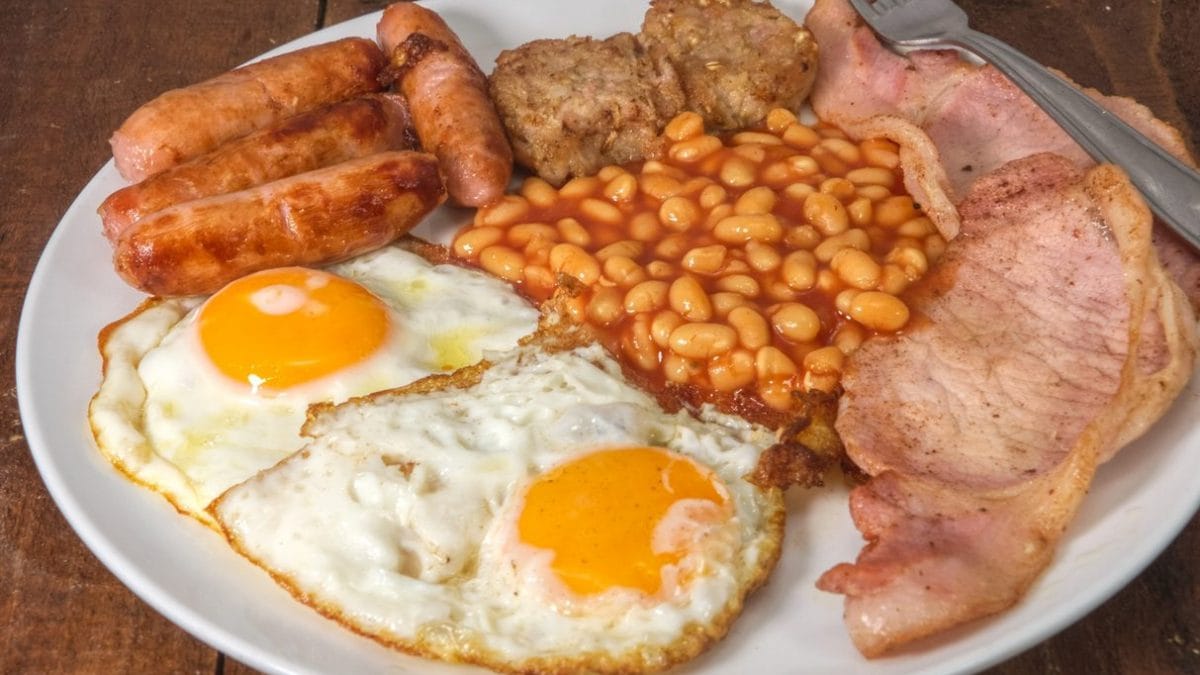
The English breakfast is not just a meal but a true icon of the United Kingdom: world-famous, legendary, difficult to digest for some cultures, normal and indispensable for others. The English breakfast is a key component of the European culinary tradition that has profoundly influenced American cuisine, and that of Anglo-Saxon countries in general. There are several variations (Scottish, Irish, Welsh with fried seaweed, etc.), but there is only one original full English breakfast.
Consisting primarily of savory, protein-rich, and calorie-rich dishes, it's also called a "fry-up" due to its significant fried content. It originated in the Middle Ages: it was so energetic precisely to ensure farmers had the right nutritional intake for the hard work in the fields, because at that time there were two main meals: a very light dinner (often consisting only of bread and some dairy products) and a hearty breakfast. It was also the typical breakfast on wedding days: in medieval England, weddings were celebrated before noon, so it seems that the English breakfast was the first meal eaten together by newlyweds.
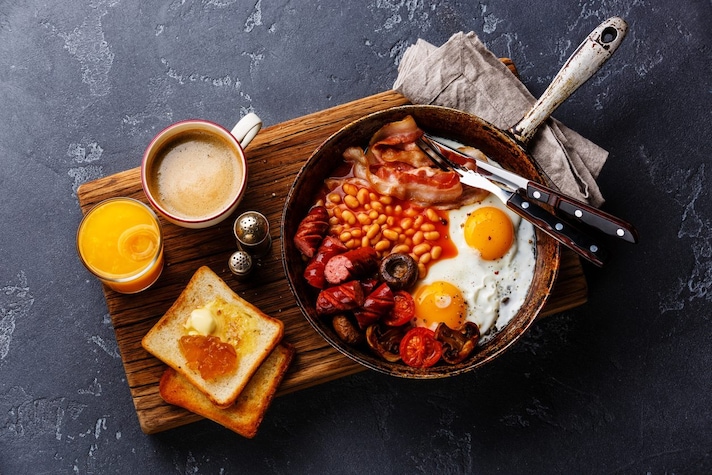
In reality, it's no longer common in the UK to eat a full English breakfast every day —many choose just one or two dishes, or opt for lighter options like porridge —but it's still a special breakfast option, perhaps for Sundays. There are many places where you can try it, and remember: when you call it a "Full Breakfast," the customer orders everything available at the restaurant.
What does a full English breakfast consist of? It includes specifically eggs, bacon, and sausage, accompanied by side dishes like grilled tomatoes, beans, and mushrooms. Let's take a detailed look at all the ingredients of a traditional English breakfast and how to prepare it to perfection.
1. The Eggs
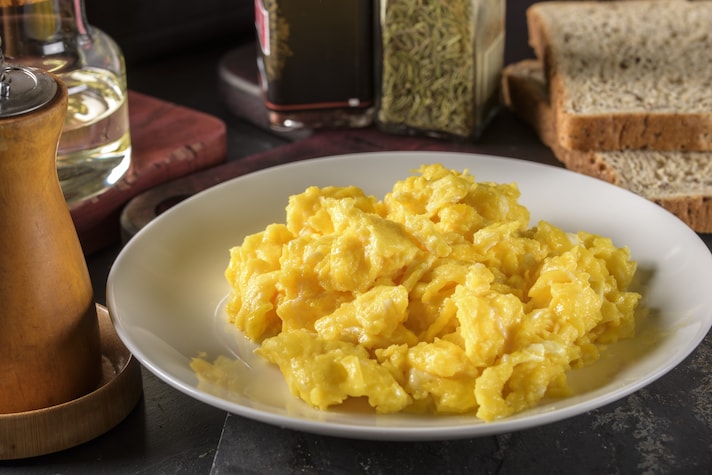
The first and essential dish of the traditional English breakfast is undoubtedly the egg, a humble ingredient but rich in protein and very nutritious. The most common preparation is usually scrambled eggs, flavored with a splash of cream, salt, and pepper, cooked in butter or oil at a low temperature, but they are also found sunny-side up, with a pinch of salt and pepper on the yolk.
Tip: when preparing an English breakfast, remember that the egg is the last ingredient to cook, so it can be served and enjoyed while still warm.
2. The Bacon
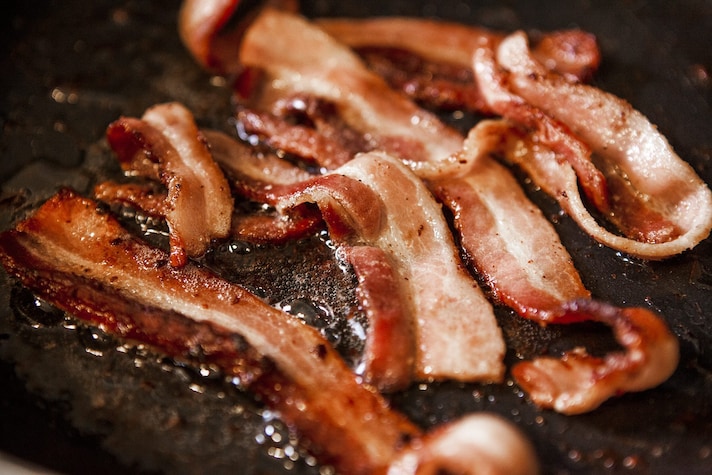
The second essential element of the classic English breakfast is bacon rashers, the crunchy highlight of the entire meal, thinly sliced and grilled until perfectly crispy. Be careful not to confuse bacon with pancetta: bacon, especially the Anglo-Saxon variety, can be made from various parts of the pig, including the belly, while pancetta is traditionally made only from the belly.
3. The Sausage
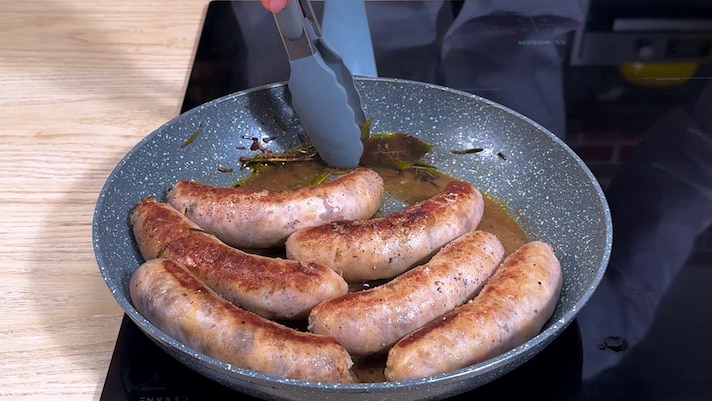
The third essential dish in this almost entirely protein-based breakfast is sausage, a humble (pork) meat preparation, often made from fatty and low-nutrient cuts, yet incredibly flavorful and easy to cook. This is why it was an essential part of the main meal of farmers and workers, and why it remains a staple of fry-ups even today. It's usually sautéed in a pan or cooked on the same griddle as bacon.
4. Black Pudding
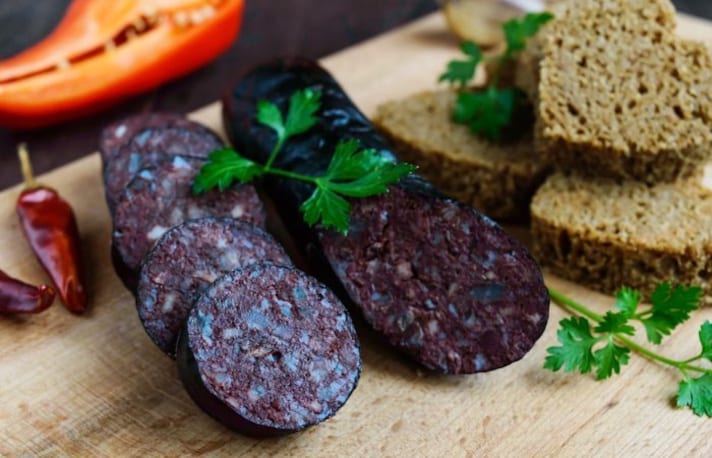
Purists of the classic and traditional English breakfast will add a fourth English specialty, one so unique that it's often left out because not everyone likes it. We're talking about black pudding: it's a sausage made with various cuts of pork, blood, lard, and flavored with spices and herbs, then wrapped in a casing like a sausage. The presence of blood gives the recipe a very pungent and intense flavor, which is why it's not appreciated by everyone.
5. Side Dishes and Accompaniments
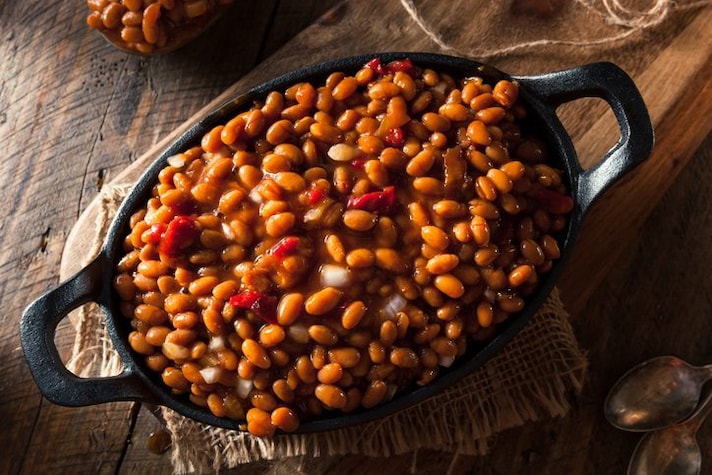
Do you think that's all there is to it? Absolutely not, because it wouldn't be a proper full English breakfast without the three essential side dishes: tomatoes, which in this case are grilled for a few seconds on a very hot griddle, creamy baked beans, served stewed or cooked in a fragrant tomato sauce, and mushrooms, sautéed over a high flame in a pan with a drizzle of oil. All of this is always accompanied by one or two slices of toasted and buttered white bread.
6. Beverages
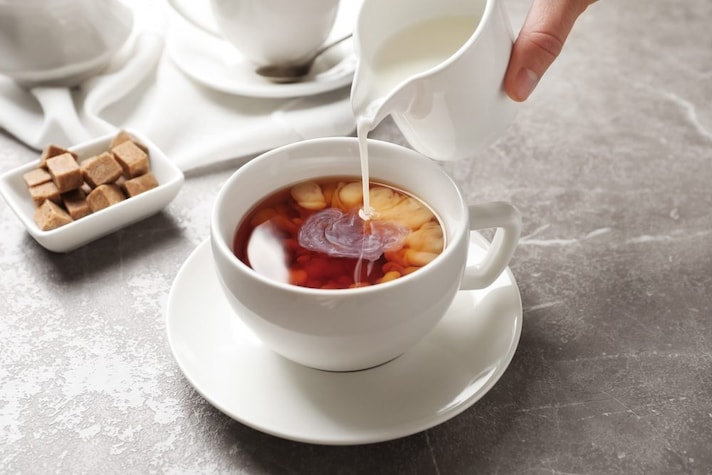
Obviously, milk is not an option with this type of breakfast: in the past, beer was used to accompany everything, especially in Scotland and Ireland, but today a steaming cup of tea is preferred, the most traditional and popular drink in Great Britain. It's no coincidence that there's a specific blend, the ‘English Breakfast‘, a mix of black tea often sweetened with sugar or honey and a dash of milk. Many alternate or replace the tea with a cup of coffee, or with freshly squeezed orange juice, or with fruit juices in general.
;Resize,width=767;)
